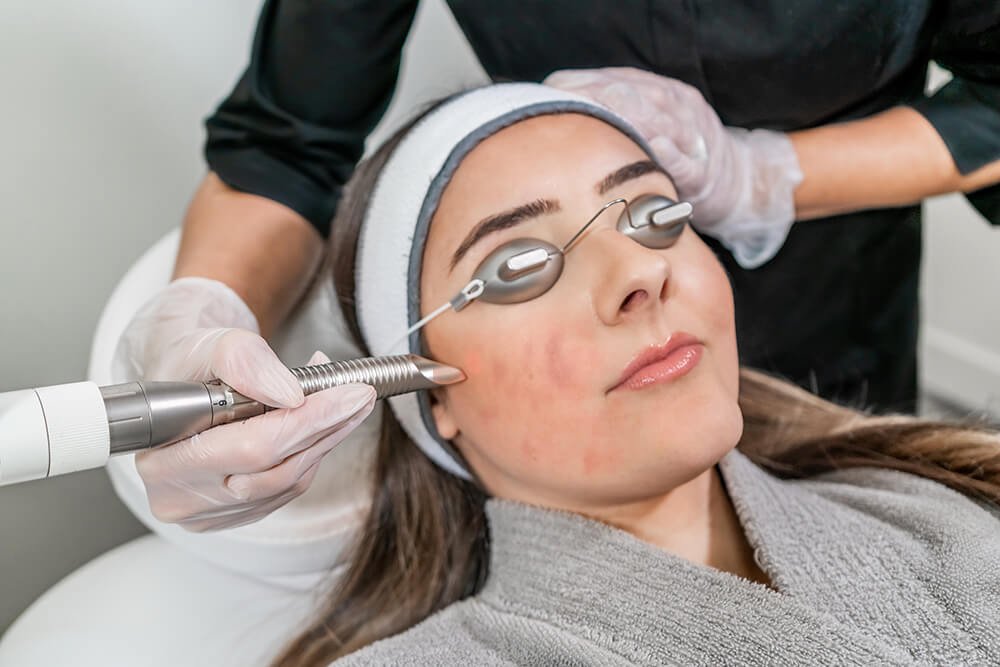Acne is a common skin concern affecting millions worldwide, and Korea—known for its innovative skincare industry—offers advanced laser treatments designed to effectively target and manage acne. If you’re considering laser treatment for acne, understanding how it works, its benefits, types of lasers used, and what to expect from Korean clinics can help you make an informed choice.
1. What Is Laser Treatment for Acne?
Laser treatment for acne uses focused beams of light energy to penetrate the skin and address various causes of acne, including:
- Killing acne-causing bacteria (Propionibacterium acnes)
- Reducing inflammation and redness
- Minimizing excess oil production
- Stimulating collagen production to heal acne scars
Unlike topical treatments, laser therapy targets acne beneath the surface, offering a more direct and often faster solution.
2. How Does Acne Laser Treatment Work in Korean Clinics?
Korean dermatologists and cosmetic surgeons use a combination of laser technologies to treat both active acne and acne scars:
- Blue Light Therapy: Targets and destroys acne bacteria without damaging surrounding tissue.
- Pulsed Dye Laser (PDL): Reduces inflammation and redness by targeting blood vessels in inflamed acne lesions.
- Fractional Laser Resurfacing: Creates microscopic wounds to stimulate collagen remodeling, improving texture and reducing scars.
- Nd:YAG Laser: Penetrates deeply to reduce oil gland activity and inflammation.
- Erbium Laser: Used for resurfacing and scar removal with minimal downtime.
Clinics often customize treatments based on the type and severity of acne, skin type, and patient goals.
3. Benefits of Laser Acne Treatment in Korea
- Targeted Approach: Directly treats acne bacteria and inflammation.
- Minimal Downtime: Many treatments are quick with limited side effects.
- Dual Action: Treats active acne and improves scars.
- Safe and Precise: Korean clinics use advanced laser devices and skilled operators.
- Complementary: Can be combined with Korean skincare products and other therapies for enhanced results.
4. Who Is a Good Candidate?
Laser acne treatment is suitable for:
- Patients with moderate to severe acne who have not responded well to medications.
- Those with acne scars looking for skin texture improvement.
- Individuals seeking a faster, more effective acne treatment.
- Patients with no active skin infections or sensitivities.
A thorough consultation in Korean clinics includes skin analysis to determine suitability.
5. What to Expect During the Procedure?
- The procedure typically lasts 15 to 30 minutes.
- You may feel mild discomfort, often described as a snapping sensation.
- Protective eyewear is provided to shield your eyes from the laser light.
- Multiple sessions (usually 3-6) spaced weeks apart are recommended for optimal results.
- No anesthesia is usually required; however, topical numbing creams can be applied if needed.
6. Possible Side Effects and Risks
- Temporary redness and swelling
- Mild skin irritation or dryness
- Rarely, pigment changes (hyperpigmentation or hypopigmentation)
- Risk of burns or scarring if performed by untrained personnel
Choosing a reputable Korean clinic with experienced dermatologists minimizes risks.
7. Post-Treatment Care in Korean Clinics
- Avoid sun exposure and use high-SPF sunscreen.
- Use gentle skincare products recommended by your dermatologist.
- Avoid picking or scratching treated areas.
- Follow any prescribed topical treatments or medications.
- Attend follow-up sessions and report any unusual reactions.
8. Cost and Treatment Packages for International Patients
- Laser acne treatment costs in Korea vary by clinic, laser type, and session number.
- Many clinics offer package deals or combination treatments tailored for international patients.
- Some clinics include translation services, accommodation support, and post-treatment care guidance.
9. Why Choose Korean Clinics for Laser Acne Treatment?
- Access to latest laser technologies developed or refined in Korea.
- Expertise in combining laser therapy with Korean skincare regimens.
- High standards of hygiene and patient care.
- Customized treatment plans respecting Asian skin types and sensitivity.
💬 Final Thoughts
Laser treatment for acne in Korea is a highly effective option for those struggling with persistent acne or scars. With cutting-edge technology and experienced dermatologists, Korean clinics provide personalized, safe, and results-driven care.




